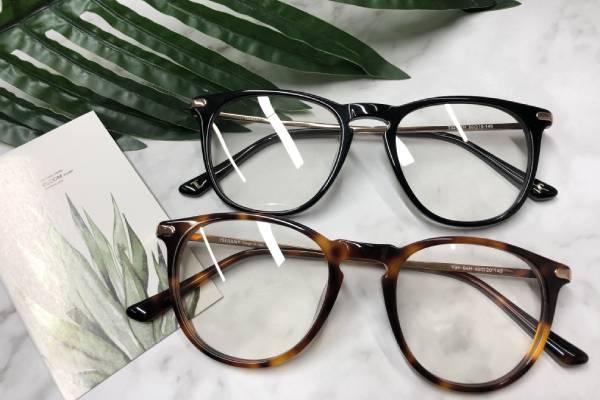Pure titanium spectacle frame
Pure titanium is α-phase titanium containing a certain amount of oxygen, nitrogen, carbon, silicon, iron, and other element impurities. Titanium is an indispensable material for modern aerospace science, marine science, and nuclear power generation, and other cutting-edge science industries. Titanium is 48% lighter than ordinary metals, has strong toughness, acid and alkali resistance, corrosion resistance, high stability, high strength, good elasticity, and other advantages. It is in line with ergonomics. Titanium is non-toxic to the human body and does not have any radiation.
Are children optometry matched with glasses the same as adults?
The optometry of children is one of the main works of optometry. Compared with adult optometry and glasses, children's optometry and glasses have both commonness and particularity. It is an area at the intersection of pediatric ophthalmology, pediatric optometry, and optometry. It requires the operator not only to have the knowledge of ophthalmology but to have the basis of children's ophthalmology and children's optometry. And they should be an optometry expert. Dealing with children's refractive problems is as much an art as a technique.
What is an MR lens?
MR is the brand name of optical lens raw materials produced by Mitsui Chemicals in Japan. MR series is available in three different refractive indices (1.60, 1.67, 1.74): MR-7, MR-8, MR-10, and MR-174. MR-7 and MR-10 have higher thermal deformation temperature and excellent dyeing, which are widely used in the field of sunglasses. MR-8 has the most balanced performance index and is suitable for the production of lenses of any strength. It has the highest market share in lens materials with a refractive index of 1.60. MR-174 is a high refractive index lens material, which is mainly used in the production of ultra-thin lenses.
What Are High-Index Lenses?
High index lenses are eyeglasses lenses that are designed to be thinner and lighter than regular lenses. High-index lenses have a high refractive index than their conventional counterparts. So, they are generally recommended for people who have significantly high refractive errors and strong prescriptions for nearsightedness, farsightedness or astigmatism.
High-index lenses correct all types of refractive errors. And they are also available as single vision lenses, or a reading prescription that corrects presbyopia, such as in a bifocal or progressive lens.
High-index lens has a higher refractive index and which is ranging from 1.53 to 1.74. A lens with an index of 1.74 could be up to 50 percent thinner than a regular plastic lens with an index of 1.50.
Seek adjustment in stores
It occurs redness and pain in the ear area. It could be that the structure of the glasses and position doesn't suit your face shape. When you're in an optician's shop, ask an optician for help in adjusting your glasses or changing the frames. Think about if the frames fit or are a little heavy. Suggest you can change to another pair. You should try a suitable and not heavy frame. You go back to the eyewear store and ask a professional to shape your frame in accordance with the outline of your ears again carefully. If you feel a little uncomfortable when you try it on, adjust it.
Why do people like wearing rimless glasses?
Suitable for a Variety of Face Shapes. The rimless glasses can perfectly present the lens without the wrapping of the frame, hence, they are very ornamental. Rimless glasses work on all face shapes, even if you have a heart-shaped face, a round face, a square face, or the enviable oval face. Compared with thick-rimmed glasses, rimless glasses do not cover too much face shape and can show the wearer's style and temperament. People with small faces will have a better wearing effect.
Why are rimless glasses so expensive?
Rimless glasses are the design vantage point in the frame of glasses. The structure of rimless glasses requires many higher physical features (flexibility, surface texture, etc.) and machining accuracy than TR, PEI, and other materials. In order to ensure comfortable wear, the common materials are very exquisite. And for processing technology, the frame is the most difficult. It's not just grinding, it's a full polishing, and it's perforating. This is the technical demand and the most time-consuming.











































